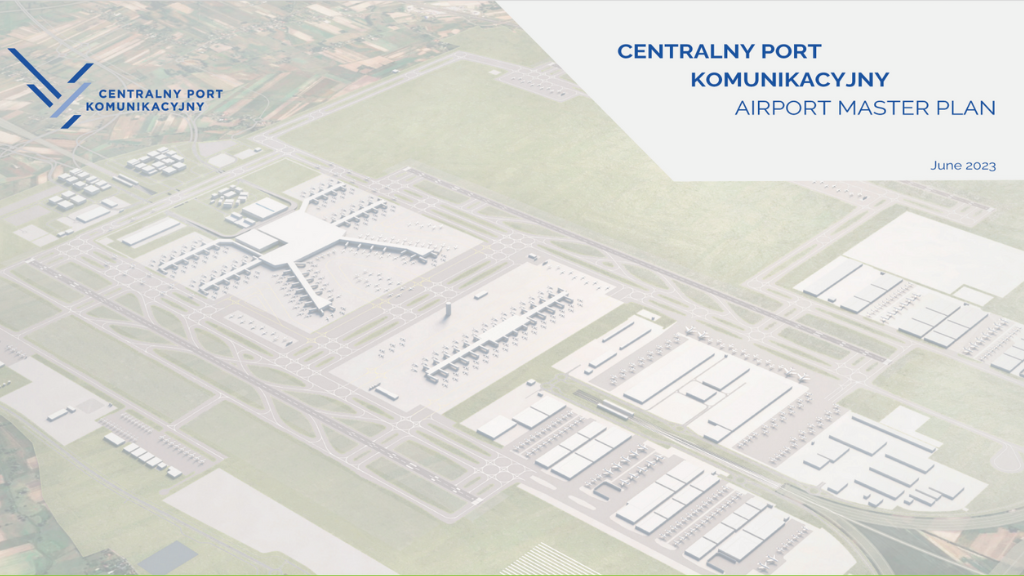CPK UNVEILS THE AIRPORT MASTER PLAN OF THE POLAND’S MOST MODERN AIRPORT
| Centralny Port Komunikacyjny (CPK) has published details of the Airport Master Plan, a key document setting out the long-term concept how the airport will develop. The compilation provides guidance for designers and contractors, and is a key source about the assumptions and plans for the development of multimodal hub that integrates air, rail and road transport. |
| A link to the summary of the CPK Airport Master Plan can be found here. The document outlines the stages of CPK airport development: from its launch, which is planned for 2028, through the subsequent stages until 2060 – the end date of the aviation forecast for the Polish market created by the International Air Transport Association (IATA). The Master Plan is in line with IATA’s forecasts, which were created assuming three scenarios – low, baseline and high – taking into account the impact of the COVID-19 pandemic. According to the baseline scenario, the level of 40 million passengers should be reached around 2035, which would imply the need for infrastructure expansion. In 2060, it is anticipated that nearly 65 million passengers per year are going to be using CPK. Transfer traffic is forecast to account for around 40% in the initial period of the airport’s operation and to increase to between 45 and 50% in the long term. The document indicates that through flexible design it should be possible to expand the terminal, aprons and other infrastructure in a modular way to ensure the efficient operation of the entire hub. On opening, the CPK airport is going to have two parallel runways, each 3,800 metres long, separated by a 2,500 metre midfield in which the necessary infrastructure should be located, including a passenger terminal with a multimodal hub and a railway station, aprons and de-icing pads, as well as an air traffic control tower. A reserve for future expansion of the third runway, which may be needed in the next stage of the airport’s development, is located to the south of the two currently designed runways. In the view of the growing demands for sustainability and green buildings, the Master Plan assumes that the airport should be ready for net zero CO2 emissions right from the launch, by providing ground handling infrastructure consisting of zero-emission vehicles and sourcing energy from renewable sources. Two additional railway stops will be built within the airport, operated by regional trains. The CPK East stop is to provide access to the Airport City (i.e. hotel, office, conference and administrative facilities). The CPK West stop, on the other hand, is planned to serve a cargo zone (the CPK Freight station for handling freight is going to be built in the western part of the interchange). The cargo terminals for airfreight are to be located on the western side of the airport. Based on IATA forecasts, the Master Plan assumes that the new CPK infrastructure, combined with the lack of such restrictions as those at Chopin Airport, should unlock the Polish air cargo potential. According to forecasts, cargo and airmail transport combined is expected to reach around 1 million tonnes as early as 2035 (before COVID-19 it was around 100,000 tonnes). |
Original article HERE
Image: cpk.pl

